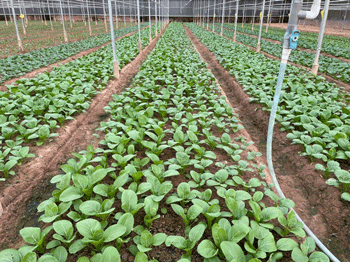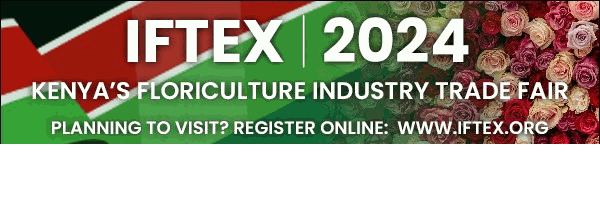
Konflex B.V. Your trusted partner in steaming solutions for horticulture and agriculture industry
Konflex B.V. is a company based in The Netherlands. We attended the 2024 Naivasha Horticultural Fair last September.
Over the years, we have continuously supplied numerous clients in Kenya with our steam boilers and accessories and we were honored to greet several of them personally in Naivasha. Our booth was visited many times and we learned that many people did not know about the use of steam against soil disease, nematodes, fungi, bacteria, viruses, weeds etc. We were happy to explain what steam treatment can do and what benefits it has.
The Benefits of Steam Treatment for Growing Substrates
Introduction
In the pursuit of optimal plant growth and disease management, growers are increasingly turning to innovative techniques for soil and substrate preparation. One of the most effective methods is steam treatment, which offers numerous advantages in sterilizing growing media. This article explores the process, benefits, and best practices for steaming soil and substrates in horticulture.
What is Steam Treatment?
Steam treatment involves the application of steam at high temperatures to growing substrates such as soil, pumice stone, peat, or coconut coir. This process effectively kills pathogens, pests, nematodes and weed seeds, ensuring a healthier environment for plant roots. It is an old and proven method and is used in The Netherlands for more than 70 years!
Advantages of Steam Treatment
- Effective Sterilization: By steam application the soil/substrate reaches temperatures of 80-100°C, which is sufficient to eliminate harmful organisms without the use of chemicals.
- Environmental Safety: Unlike chemical treatments, steam sterilization is eco-friendly and reduces the risk of chemical residues in the crop as well as in the growing environment.
- Improved Plant Health: By reducing disease incidence, steam-treated substrates promote better root development and overall plant vigor.
- Cost-Effective: While initial setup costs may be higher, steam treatment can lead to long-term savings by reducing crop loss and improving yields and there is no delay in replanting. Replanting or sowing can be done directly after steam treatment.
The Steam Treatment Process
- Preparation: Begin by preparing the growing substrate for the steaming by loosening dense material. It is easier for steam to penetrate in loosened growing material than it is in very dense material. Make sure that the substrate is not too dry, as steam penetrates moist materials more effectively.
- Method of steaming: The most used method is “sheet steaming”. Cover the steaming area with a plastic sheet and weigh down the edges with sandbags to keep the steam under this sheet.
- Steaming: Use our low-pressure steam boilers; producing >220 degrees Celsius steam. Our steam boilers operate with only 0,3 bar pressure. Ensure even distribution of steam throughout the steaming area; growing substrate.
- Duration: Maintain steaming for a specific duration—typically 30 to 45 minutes—depending on the substrate type and desired level of sterilization.
- Cooling: After steaming, allow the steaming area to cool gradually. Keeping the steaming area covered ensures that the growing substrate will maintain the high temperature for a longer time.
- Monitoring Temperature: Use thermocouples thermometers to ensure the substrate reaches the necessary temperature throughout the process.


Conclusion
Steam treatment is a valuable technique for growers looking to enhance the health and productivity of their crops. By investing in this eco-friendly sterilization method, horticulturists can create a robust growing environment that fosters plant growth while minimizing the risks associated with pests and diseases. As the industry continues to embrace sustainable practices, steam treatment stands out as a leading choice for substrate preparation.
Who is Konflex B.V.
Supplier of low pressure mobile or stationary steam boilers, ranging from 100 kilograms up to 4000 kilograms of (superheated) steam per hour, including all accessories needed for the total steaming process.
Our steam treatment systems effectively sterilize growing substrates, eliminating pests and pathogens without harmful chemicals.
We pride ourselves on our commitment to sustainability and efficiency in agriculture, helping growers achieve optimal results while minimizing environmental impact.
Konflex provides expert advice and tailored solutions to help every individual client find the best steaming solution for their growing substrate. We offer small growers/farmers as well as global enterprises a fitting steaming solution.
Sometimes smaller growers/farmers purchase a steam boiler together as a group and share it and/or rent it out to others.
With years of experience Konflex B.V. is passionate about agriculture. We stay updated on the latest trends and advancements, ensuring our clients receive the best possible solutions.
Konflex B.V. serves a diverse clientele, including commercial growers, nurseries, and agricultural enterprises. We work closely with our clients to understand their unique challenges and provide customized solutions that drive success.
We train people and maintain close contact with our clients, to ensure workers are able to operate the steam boiler and understand and safely execute the steaming process.
Our steam treatment technology not only enhances substrate quality but also promotes healthier ecosystems by reducing reliance on chemical treatments.
Konflex B.V.’s sustainable mission:
Eliminate the use of chemicals… Use steam instead!
For more information about our products and services:
Please visit our website www.konflex.nl and/or send us an email: info@konflex.nl
| Lethal temperatures pathogens / pests /weed seeds | ||
| Plant pathogens / pests | Temperature in degrees Celsius | Treatment time (min.) |
| Most bacteria | 60-70 | 10 |
| Botrytis Cinerea | 55 | 15 |
| Colletotrichum coccodes | 45-50 | 30 |
| Cylindrocarpon destructans | 45-50 | 30 |
| Didymella lycopersici | 50 | 30 |
| Fusarium oxysporum | 57-60 | 30 |
| Fusarium spp. | 45-60 | 30 |
| Olpidium brassicae | 55-63 | 30 |
| Phialophora cinerescens | 50 | 30 |
| Phomopsis sclerotioides | 45-50 | 30 |
| Phytophthora spp. | 40-50 | 30 |
| Plasmodiophora brassicae | 50-60 | 30 |
| Pythium spp. | 43-53 | 20-40 |
| Rhizoctonia spp. | 52-53 | 30 |
| Sclerotinia sclerotiorum | 50 | 5 |
| Sclerotium rolfsi | 50 | 30 |
| Thielaviopsis basicola | 48 | 30 |
| Verticillium spp. | 40-58 | 30 |
| Most phytopathogenic fungi | 60 | 30 |
| Most Actinomyces | 90 | 30 |
| Leaf nematode (Aphelenchoides spp.) | 49 | 15 |
| Root-knot nematode (Meloidogyne incognita) | 48 | 15 |
| Pratylenchus penetrans | 49 | 10 |
| Most viruses | 100 | 15 |
| Insects and mites | 60-70 | 30 |
| Worms, snails, centipedes | 60 | 30 |
| Most weed seeds | 70-80 | 15 |
| Source: Tabelle 2-1: Lethaltemperaturen von Krankheitserregern, Schädlingen und Unkrautsamen nach JARVIS, (1992), Tabelle 10, seite 91, BOLLEN, (1969a), BOLLEN, (1969b) und BOLLEN, (1985). | ||


